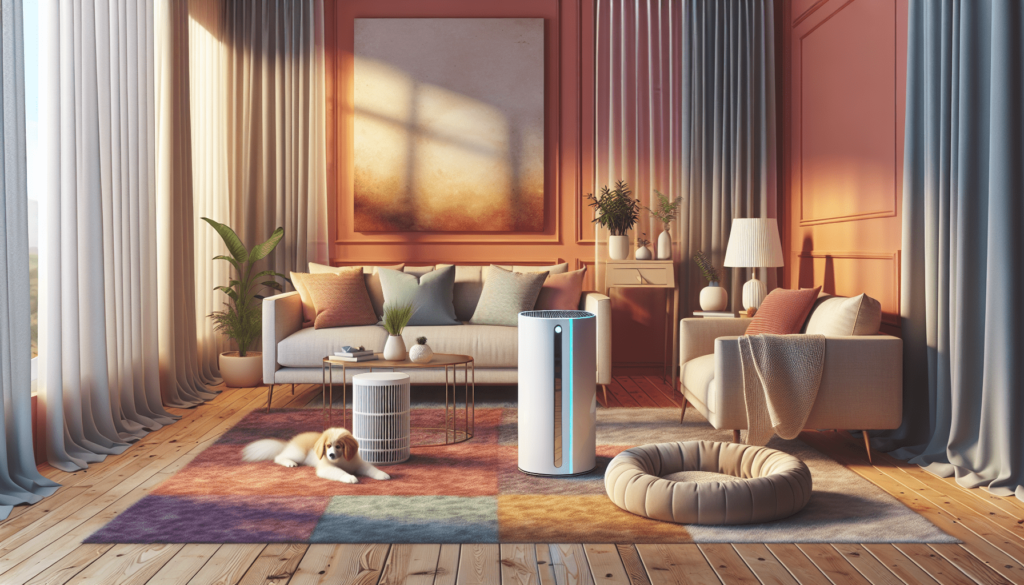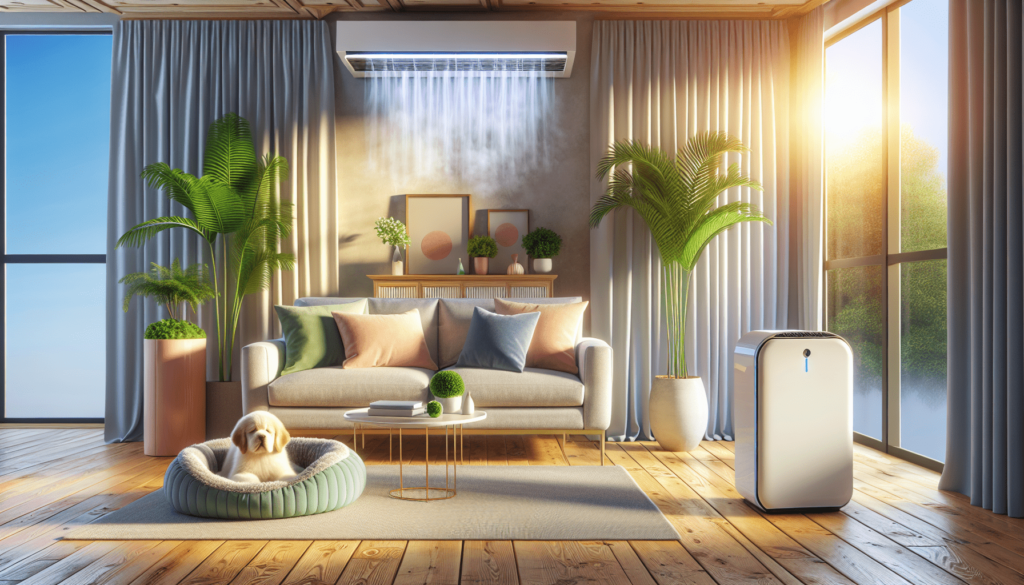Have you ever wondered how you can create a pet-friendly home for family members who suffer from allergies? Allergies to pets can make it difficult for some to fully enjoy the companionship of furry friends. Fortunately, there are renovation tips and strategies you can utilize to make your home a safe haven for both your pets and those who suffer from allergies.

Understanding Pet Allergies
Before diving into renovation tips, it’s essential to understand what pet allergies are and how they affect individuals. Pet allergies are reactions to proteins found in an animal’s skin cells, urine, or saliva. These allergens can cause symptoms like sneezing, itchy eyes, runny nose, and even asthma attacks in some people.
Common Pet Allergens
Knowing the sources of pet allergens is the first step in mitigating them. Typical allergens include:
| Allergen Type | Description |
|---|---|
| Animal Dander | Tiny flakes of skin shed by cats, dogs, and other pets |
| Saliva | Saliva that dries and turns into airborne particles |
| Urine | Urine that can also contain allergy-triggering proteins |
Understanding where these allergens come from can help you better target them during your renovation project.
Flooring Choices
The type of flooring you have can significantly impact the level of pet allergens in your home. Carpet, for instance, tends to trap allergens and is often harder to clean. Opting for allergy-friendly flooring materials can make a huge difference.
Hard Flooring Options
Opting for hard flooring minimizes the accumulation of allergens and makes cleaning much easier.
| Flooring Type | Benefits |
|---|---|
| Hardwood | Easy to clean; durable |
| Tile | Hypoallergenic; moisture-resistant |
| Vinyl | Easy to maintain; resistant to mold and mildew |
| Laminate | Cost-effective; looks like hardwood |
Area Rugs
If you love the feel of carpets but want to avoid allergens, area rugs can be an excellent compromise. They can be easily cleaned or even replaced if they become too saturated with allergens. Make sure to choose washable rugs made from low-pile or hypoallergenic materials.
Furniture and Upholstery
The furniture and upholstery you choose also play a significant role in maintaining a pet allergy-friendly environment. Certain materials can collect and harbor allergens, making flare-ups more likely.
Hypoallergenic Furniture Materials
Selecting hypoallergenic furniture can help minimize allergens.
| Material Type | Benefits |
|---|---|
| Leather | Non-porous; easy to clean |
| Pleather | Affordable alternative to leather |
| Metal | Durable; not prone to collecting allergens |
| Wood | Requires proper coating but is generally safe |
Upholstery and Fabric Choices
If opting for upholstered furniture, choose fabrics that are less likely to trap allergens:
| Fabric Type | Benefits |
|---|---|
| Microfiber | Tightly woven; easy to clean |
| Canvas | Sturdy; can usually be wiped clean |
| Synthetic Fabrics | Less likely to trap allergens compared to natural materials |
Pro tip: Avoid heavy drapes and opt for blinds made from non-porous materials such as metal or plastic.
HVAC Systems
Your home’s heating, ventilation, and air conditioning (HVAC) system can either help alleviate or exacerbate pet allergies. Good ventilation is essential for reducing allergens in the air.
Air Filters
High-efficiency particulate air (HEPA) filters can capture particles as small as 0.3 microns. Standard air filters might not be as effective at trapping allergens.
| Filter Type | Description |
|---|---|
| HEPA Filters | Captures 99.97% of airborne particles |
| Electrostatic Filters | Charges particles, making them stick to the filter |
Air Purifiers
Air purifiers can be an excellent addition to your home, especially for high-traffic areas where pets spend a lot of time.
| Purifier Type | Benefits |
|---|---|
| HEPA Air Purifiers | Effective at removing pet dander and hair |
| Carbon Filters | Good for removing odors |
Regular HVAC Maintenance
Regularly changing your HVAC filters and scheduling routine maintenance can help keep allergens at bay. Ensure ducts are clean and free from any pet hair or dander.

Cleaning Practices
A consistent cleaning routine is vital for maintaining a pet allergy-friendly home. Regular cleaning helps to remove allergens and reduces overall exposure.
Vacuuming and Sweeping
Routine vacuuming and sweeping with high-quality tools can go a long way in controlling pet allergens.
| Cleaning Tool | Benefits |
|---|---|
| HEPA Vacuums | Traps smaller particles including pet dander |
| Robot Vacuums | Can schedule regular cleanings in pet-heavy areas |
Washing and Wiping Surfaces
Frequent washing of pet bedding, toys, and any cloth materials your pet comes into contact with can reduce allergens in your home.
| Area | Cleaning Frequency |
|---|---|
| Pet Bedding | At least once a week |
| Upholstered Furniture | Weekly vacuuming and spot cleaning |
Pet Grooming
Regular grooming of your pets can alleviate the amount of dander and saliva they release into your home.
Grooming Practices
Consistent grooming practices can minimize the spread of pet allergens.
| Grooming Task | Benefits |
|---|---|
| Brushing | Removes loose fur and dander |
| Bathing | Reduces allergens in the pet’s fur |
Pro tip: Consider using hypoallergenic shampoos and conditioners that are gentle on your pet’s skin.
Grooming Tools
Investing in the right grooming tools can make the process easier and more effective.
| Tool Type | Benefits |
|---|---|
| Deshedding Tools | Great for pets with long fur |
| Grooming Gloves | Makes grooming a bonding activity |
Setting Up Pet-Free Zones
Creating pet-free zones in your home can help particularly sensitive individuals avoid allergens altogether. Bedrooms are a great place to start since one spends a lot of time in them.
Pet-Free Zone Guidelines
Establish guidelines and stick to them to maintain the integrity of pet-free zones.
| Zone | Suggested Implementation |
|---|---|
| Bedrooms | Keep doors closed; use air purifiers in the room |
| Study/Home Office | Use furniture covers; vacuum regularly |
High-Usage Areas
Designate certain high-usage areas like living rooms as pet-friendly, focusing more cleaning efforts in these spaces.
| Area Type | Tips |
|---|---|
| Living Rooms | Opt for hard flooring; use washable fabrics |
| Kitchens | Keep food and water bowls clean |
Outdoor Spaces
Sometimes, taking some elements of your pet’s life outdoors can dramatically affect indoor allergen levels. It’s worth considering as part of your overall strategy.
Outdoor Pet Area
Create a designated outdoor pet area to provide your pets with safe, enjoyable spaces where they can play and relax.
| Area Element | Benefits |
|---|---|
| Pet Kennels | Keeps pets safely contained outdoors |
| Shaded Play Areas | Offers protection from the sun; reduces indoor fur scatter |
Landscaping Considerations
Choose plants and landscaping materials that do not contribute additional allergens to your home environment.
| Element | Benefits |
|---|---|
| Non-pollen releasing plants | Minimizes allergen production |
| Low-pollen grass varieties | Reduces grass-related allergies |
Dealing with Specific Pet Types
Different pets have different allergy considerations. Whether you have cats, dogs, or other smaller fur-bearing pets, specific strategies can apply.
Cats vs. Dogs
Cats tend to produce more allergens than dogs, primarily due to their grooming habits and higher dander production.
| Pet Type | Specific Tips |
|---|---|
| Cats | More frequent grooming; HEPA purifiers |
| Dogs | Regular baths; washable bedding |
Small Pets
Small pets like rabbits and guinea pigs also produce allergens. Keep their cages clean and use air purifiers near their living spaces.
| Small Pet Type | Specific Tips |
|---|---|
| Rabbits | Cage cleaning twice a week |
| Guinea Pigs | Use hypoallergenic bedding |
Hypoallergenic Pets
If allergies are particularly severe in your household, consider opting for hypoallergenic breeds known to produce fewer allergens.
Hypoallergenic Dog Breeds
Certain dog breeds are known to be more hypoallergenic than others.
| Dog Breed | Characteristics |
|---|---|
| Poodle | Low dander; fewer shedding issues |
| Schnauzer | Less shedding; low dander, easy to groom |
Hypoallergenic Cat Breeds
Some cat breeds produce fewer allergens than others.
| Cat Breed | Characteristics |
|---|---|
| Siberian | Low in Fel d1 protein, which causes allergies |
| Balinese | Lesser shedding; low allergen production |
Other Low-Allergen Pets
If you’re open to pets beyond cats and dogs, consider these low-allergen options.
| Pet Type | Characteristics |
|---|---|
| Fish | No allergen production |
| Reptiles | Minimal allergen risk |
Professional Help
While you can do a lot on your own, seeking professional help can ensure that your renovations are as effective as possible.
Allergy Specialists
Consulting an allergy specialist can provide you with tailored advice based on your specific circumstances. They may recommend:
| Specialist Type | Beneficial For |
|---|---|
| Allergists | Personalized allergen exposure reduction plans |
| Home Inspectors | Assessing indoor air quality |
Renovation Experts
Hiring a renovation expert familiar with creating allergen-free environments can save you time and effort.
| Expert Type | Benefits |
|---|---|
| Home Inspectors | Assessing indoor air quality |
| Contractors | Expert advice on materials and renovations |
Ongoing Maintenance
Finally, keep in mind that maintaining a pet allergy-friendly home is an ongoing effort. Consistent cleaning, grooming, and air quality checks are necessary to keep allergens at bay.
Seasonal Deep Cleaning
Consider setting up a schedule for more intensive cleaning efforts during specific seasons when allergens can be at their peak.
| Cleaning Task | Frequency |
|---|---|
| Deep Carpet Cleaning | Twice a year |
| Air Duct Cleaning | Annually |
Monitoring and Adjusting
Constantly monitor the effectiveness of your efforts and adjust as necessary. This might involve trying different cleaning products or changing your pet’s grooming routine.
| Task | Adjustment Tools |
|---|---|
| Air Quality Monitoring | Use air quality monitors to track changes |
| Cleaning Product Trial | Test hypoallergenic cleaners |
Creating a pet allergy-friendly home takes planning, effort, and a consistent approach. However, with these tips, you can ensure a more comfortable living environment for everyone. By implementing these strategies, you offer a balanced solution that respects the needs of both your beloved pets and family members who suffer from allergies.
